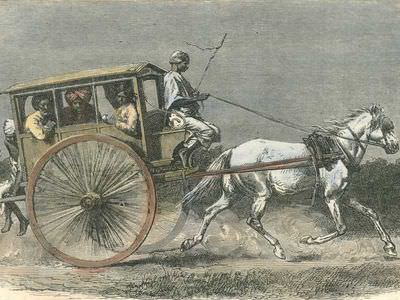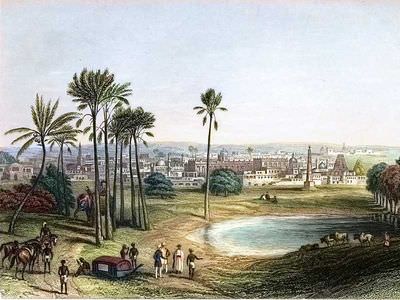World News in Indian Newspapers, 1782-1908

Reports from The India Gazette, The Bengal Hurkaru and Chronicle, and The Bengal Times
World News in Indian Newspapers is a welcome addition to the Power and Preachers series. Its contents provide scholars with an unparalleled and comprehensive insight into the nature of British colonial rule in India, revealing how its leaders and functionaries saw both themselves and their subjects, and how that perception changed along with the world around them.University of Leeds
Access the full collection
Get full access to World News in Indian Newspapers, 1782-1908.
Institutional Free Trial
Sign up for a FREE trialAlready have a license? Sign in to view the collection
Study the attitudes, habits, and preoccupations of Britain's colonial classes in India

Part of our wide-ranging Power and Preachers series, this collection contains copies of three English language newspapers published in India during the period 1782-1908: The India Gazette (1782-1834); The Bengal Hurkaru and Chronicle (1822-1866); and The Bengal Times (1876-1908).
These newspapers were primarily sold to colonial businessmen, merchants, and administrators with an interest in regional and international trade. Editors and reporters therefore focussed on providing readers with an overview of significant political, military, economic, scientific, and societal trends, as well as their potential impact on stocks, commodities, and other investments.
Subjects covered range from the American Revolution and the Crimean War to British parliamentary debates on the India Act of 1858 and the dramatic industrial and pharmaceutical breakthroughs of the late 19th and early 20th centuries. India, England, France, Ireland, Italy, the United States, and China receive the most attention, though items regarding other nations also feature.
Contents
World News in Indian Newspapers, 1782-1908...
Reports from The India Gazette, The Bengal Hurkaru and Chronicle, and The Bengal Times
Discover
Highlights

Licensed to access Discussions on the United States' plans to annex Texas, January 1845

Licensed to access An account of the Ludwig I's relationship with Lola Montez, April 1848

Licensed to access A protest in Natal disrupts the Indian indentured labour trade, January 1897
Insights
- News coverage from France is a frequent feature in many of these items due to Britain's tempestuous relationship with its colonial rival.
- The growth of the campaign for Indian independence led to a significant increase in the number of articles relating to Indian affairs. Indeed, from 1897 onwards, the Bengal Times devoted less and less column inches to foreign news.
- Media of the time were particularly interested in the proliferation of scientific discoveries and technological advancements which had come to define the industrial age. Developments such as the steam locomotive and the exploits of microbiologist Louis Pasteur were thus examined and commented upon in great detail. The volume of advertisements for medical treatments of dubious value significantly increase after 1894.
- Definitions of ‘significant’ and ‘insignificant’ historical events can change markedly over time. Searching The Bengal Hurkaru and Chronicle for 'extraordinary' reveals what was then considered to be news of significance.
- In the earliest editions of The India Gazette, news of book publications and copies of poems became a regular feature. The publication of poetry would continue in these newspapers until its substitution for advertising space in the 1890s.
- During the 1840s, a newspaper required a license from the British government in order to publish literary content. The Bengal Hurkaru and Chronicle and India Gazette used such a license to establish the ‘Literary Gazette’ as a supplement to their newspapers.





